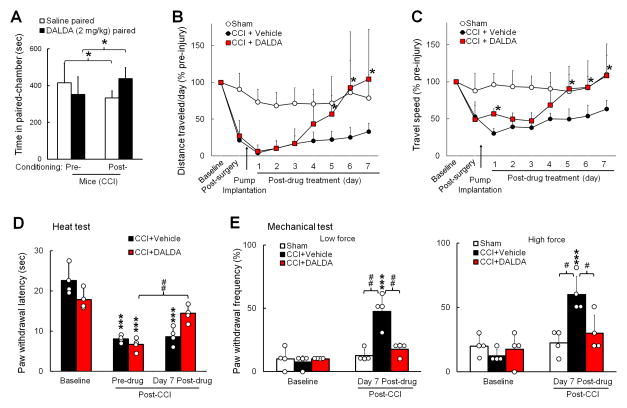Figure 2. Systemic administration of dermorphin [D-Arg2, Lys4] (1–4) amide (DALDA) reduces neuropathic-pain related behavior and improves wheel running performance in nerve-injured mice.
(A) Mice that underwent chronic constriction injury (CCI) of the sciatic nerve spent more time in the DALDA-paired chamber after conditioning with DALDA (2 mg/kg, s.c., n=8). Two-way repeated measures ANOVA with Bonferroni post hoc test, *P < 0.05. (B) DALDA (3 mg/kg/day, s.c.) or vehicle (n=6/group) was delivered continuously to CCI mice through an implanted osmotic pump for 7 days. The distance traveled each day on the wheel decreased sharply after CCI, as compared to that after sham surgery (n=5). The distance traveled by CCI mice showed a greater increase from day 5 after DALDA than after vehicle treatment. (C) The average speed on the wheel after CCI and DALDA treatment. B–C: Two-way mixed model ANOVA with Bonferroni post hoc test, *P < 0.05 versus vehicle-treated CCI group. (D) A subgroup of animals was tested for mechanical and heat sensitivity. The decrease in paw withdrawal latency to heat stimulation after CCI was increased from pre-drug level on day 7 by DALDA, but not by vehicle (n=4/group). (E) The increased paw withdrawal frequency of CCI mice to mechanical stimulation (von Frey, 0.1 g, 0.47 g) was decreased by DALDA. D–E: Two-way mixed-model ANOVA with Bonferroni post hoc test, ***P < 0.001versus baseline, #P < 0.05, ##P < 0.01, versus the indicated group. Data are expressed as mean ± SD. ANOVA, analysis of variance; s.c., subcutaneous.

